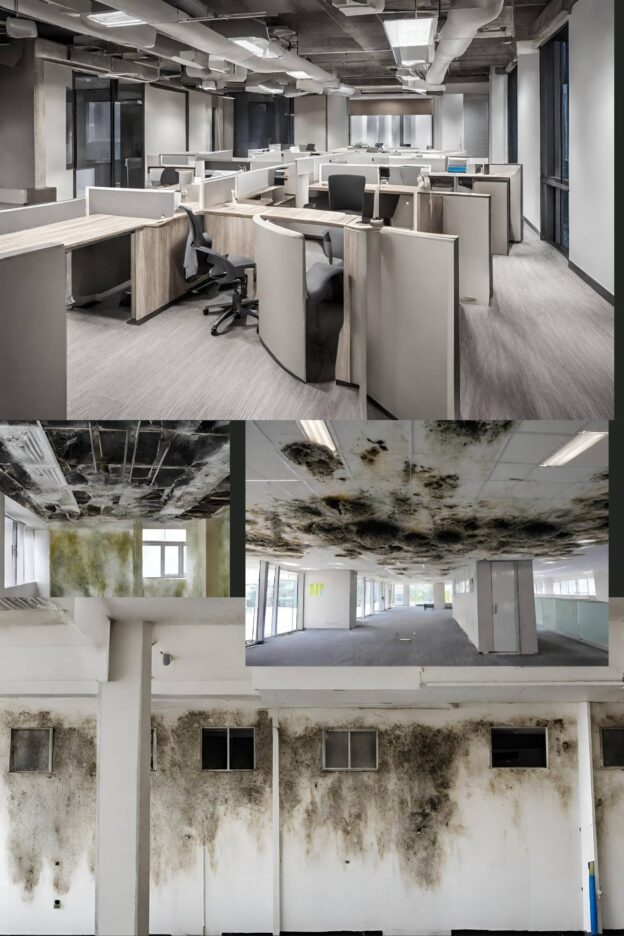Overview:
The challenge presented itself in a high-rise building encompassing both residential and multi-purpose commercial spaces. The buildings aged between 20 and 25 years were coupled with prevailing hot and humid climatic conditions in the sub-tropical zone. An average outdoor relative humidity of 59% and temperatures ranging between 34°C and 25°C year-round – mould formation and high indoor humidity were prevalent.
Problem Identification: The indoor environment quality was compromised, maintaining a room temperature between 21°C and 24°C. Notably, indoor humidity consistently remained between 90% and 95% for over 90 days per year, leading to frequent condensation on air inlet diffusers and mould growth on household items, furniture, and walls within the apartments. The persistent mould issue raised concerns among occupants throughout the year.
Root Causes: Several factors contributed to the indoor humidity, including behavioural, design, and maintenance issues. Behavioural patterns of apartment occupants, such as leaving bathroom doors open after showering, indoor clothes drying, and failure to activate inline exhaust fans, were identified as significant contributors. Furthermore, design issues resulting in negative pressure across the building allowed the outside wind to infiltrate through window seals. Additionally, inadequate maintenance practices, including poorly maintained air conditioning systems and breakdowns in the Fresh Air Handling Unit, exacerbated the problem.
- Over-cooling lowered indoor surface temperature below the dew point temperature, usually around 150 C, Causing condensation over more than 90 days in a year.
Remediation and Prevention Measures: To address the multifaceted challenge, a comprehensive approach was adopted:
- Occupant Awareness: Circulation of informational flyers detailing necessary precautions and vigilance for occupants to maintain a conducive indoor environment.
- Building Structural Improvements: Identify and repair air infiltration areas to ensure a positive indoor pressure of at least 0.1 inHg. Repairs and replacements of components within FCU boxes were undertaken, alongside thorough indoor air duct cleaning.
- System Enhancements: Restoration of operational status to Fresh Air Fans, facilitating the influx of fresh air into the building. Application of waterproofing wall paints to interior walls and re-insulation of chilled water piping to prevent further moisture ingress.
- Building Integrity Assurance: Ensuring air tightness within the building to prevent external elements from compromising indoor environmental conditions.
Outcome: By addressing behavioural, design, and maintenance shortcomings through a combination of awareness campaigns, structural enhancements, system improvements, and building integrity assurance, the indoor environment quality significantly improved. Condensation on air inlet diffusers reduced, and the persistent mould formation issue abated, creating a healthier and more comfortable living and working environment for building occupants.
-> Case Study of Resolving Mould Formation in a High-Rise Building


I am extremely impressed together with your writing talents as smartly as with the format to your weblog.
Is this a paid subject or did you customize it yourself?
Either way keep up the excellent quality writing, it is rare to see a great weblog like this one nowadays.
Instagram Auto follow!